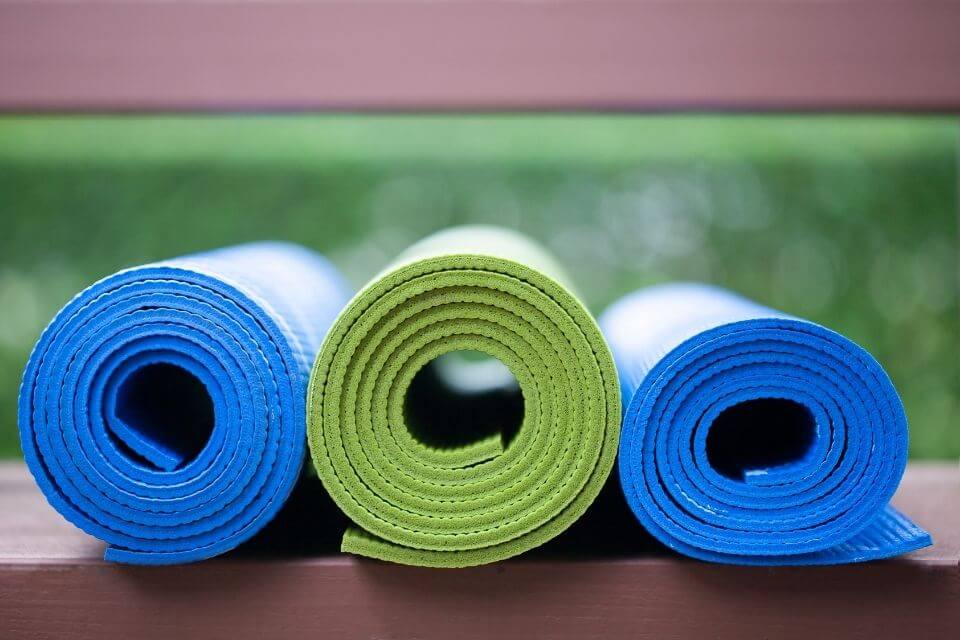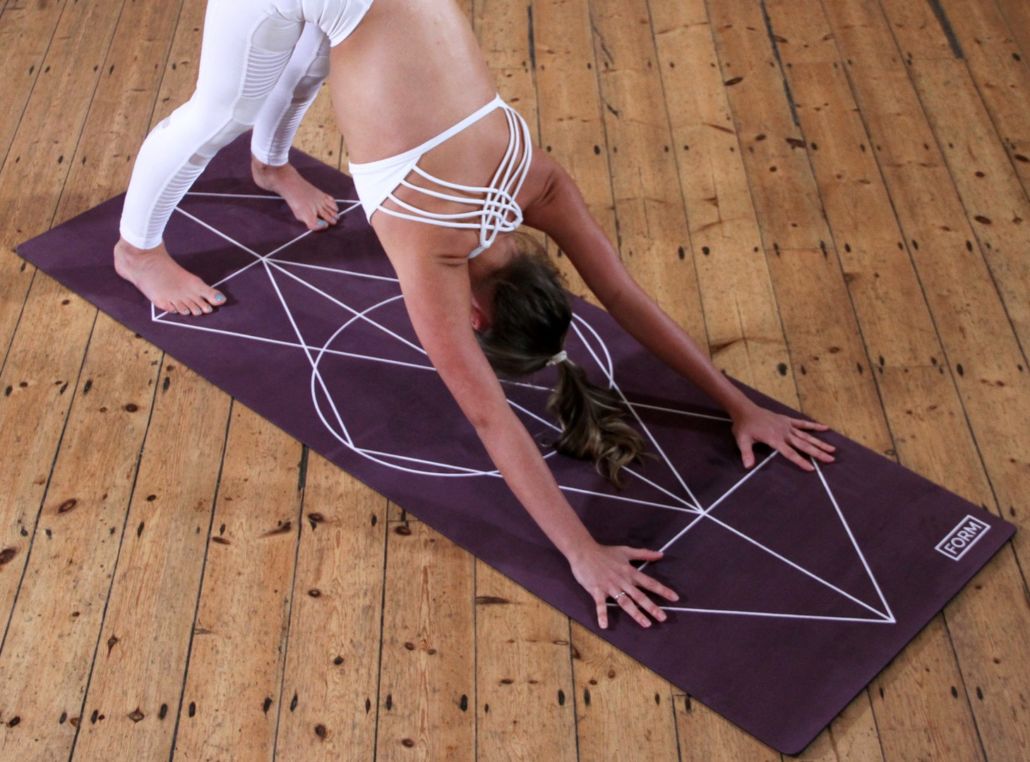Yoga has become popular as a form of physical exercise that promotes improved control of the body and mind and enhanced well-being. During ancient times, Indian yogis practiced directly on the grass or dirt. Rugs made out of tiger or deer skins were also used; although, the scarcity and high price meant that they were never particularly widespread.
If you are looking for a eco-friendly mat that will last you for an extended period of time, then you might want to consider investing in a yoga mat that is made from synthetic materials. These mats typically last longer than mats made from natural rubber materials, and they are also more responsive to your body. If you are just starting out, it is advised that you purchase a mat that is at least 18 inches wide.

When yoga became popular in the West, rubber, cotton, and towel mats were used. A yoga mat is a type of mat that is made specifically for yoga practice. Yoga mat provides a cushioned and non-slip surface, making it easier to perform yoga asanas comfortably and safely in yoga studio or at home. However, a yoga mat is not a necessity for a fulfilling yoga practice. Some may as well practice on a bare floor if they find it comfortable. Most practitioners, though, use a yoga mat for a few reasons. Hygiene is a major factor why people opt to use mats. The mats that can be rented or used for free at the studio do not seem to be cleaned very often. No one would appreciate it during the Dolphin pose or low plank. Even if the studio floor is often cleaned after sessions, there is will still be a risk of diseases. These factors would make it clearer to understand why most practitioners prefer their own mats.
There is a wide variety of yoga mats now that are being sold worldwide. They come in a vast array of styles, colors, and patterns. Some are eco-friendly, while others are designed to be easy to use and carry around anywhere. The primary purpose of a yoga mat is to help practitioners maintain the grip of the feet and hands while extending the body into any position. The standard size for a yoga mat is 68 inches long and 24 inches wide, but yoga professionals set no fixed measurements. While there is a wide variety of mats to choose from, there are also help guides for practitioners to know where to start when choosing a perfect length of yoga mat.
Need a new yoga mat? Check out our complete guide on the best yoga mats.

Different Lengths for Various Heights
The first thing to consider is the practitioner’s height and size. The person may end up with their knees and hands going onto the dirty and hard floor in many positions with a small mat. The long yoga mat, in this case, can make a huge difference in the ability to enjoy the yoga experience more. The standard length of a yoga mat is equivalent to a person who stands at 5’8″. For practitioners beyond that height or who want a longer mat, longer yoga mats come in lengths of 71 inches, 72 inches, 74 inches, and 84 inches. There are even extra-long mats that are beyond 7 feet long.
It is suggested that the practitioners find a mat that allows their heads and feet to be on the mat when lying flat. Extra-long yoga mats will be slightly heavier to carry and a little bulkier when rolled up, but this is a small con compared to the pros of being comfortable during the yoga practice.
Yoga mats with 28 or 30-inch widths are also available. These are wider than the 24-inch standard width but are great for those who want a little more wiggle room for poses on the back of the mat. Also, wider mats are perfect if you need extra space for poses such as a wide-legged forward fold or gate pose, where hands, legs, and feet tend to go off the mat.

Knowing the Perfect Length through Yoga Poses
To check the length of the mat reliably, practitioners may do a Downward Dog pose. The hands and feet should be on the mat in such a pose. If they find their toes hang over the edge in this position using a standard yoga mat size, for average yoga mat length, they should try one at 70″ or 73″ inches. This should keep them from sliding out of Downward-Facing Dog, even during vigorous, flowing Ashtanga practice. Short yoga mats might make it difficult for practitioners to relax.
Another position that practitioners may try before buying a yoga mat is the Corpse Pose. Since it is essential to consider a long enough mat, this pose could be tested to ensure that when lying on the floor, the face or head would also be on the mat and not on the bare floor. This could be for several reasons: cushioning, keeping the head off of a cold floor, or just for comfort when in a public studio. This can be one of the most important options to consider, especially when using a yoga mat for Restorative Yoga.
The practitioners may also test a Chaturanga Pose. If the face goes over the mat while doing the pose, a longer mat is suggested. This may also help them determine if they need to redirect the placement on the mat.
Considering Where to Do Yoga
Where to do yoga also makes a big difference in choosing the perfect mat. If practitioners intend to primarily do yoga at home, they do not need to worry about a lightweight mat that they can transport easily. However, if yoga classes are done outside the home, a mat that is not too long and can be carried around easily is a better choice. Practitioners who travel a lot and do yoga when on the road may look into a shorter and lighter-weight mat. Others invest in a second yoga mat that they can bring on trips.
People come in all shapes and yoga mat sizes. Therefore, not all mats are created equal. This is why it is essential to know how to find the perfect length. Having these factors to consider, choosing the ideal mat can never be hard. The standard yoga mat length is only one of the factors to consider in choosing the right one, along with texture, color, material, thickness, and other various things. Among these considerations, comfort is what always matters.
In conclusion, the size of a yoga mat you need really depends on your height and the amount of space you have to practice. If you are taller, you might need a longer mat to ensure that your feet are fully planted on the ground. If you have a lot of space to practice, you might not need a mat as long as someone who practices in a small area. Ultimately, it is important to find a mat that feels comfortable and stable for your practice.
